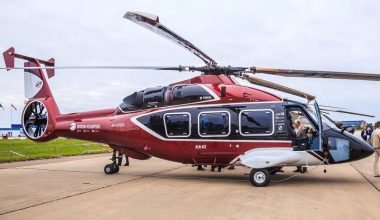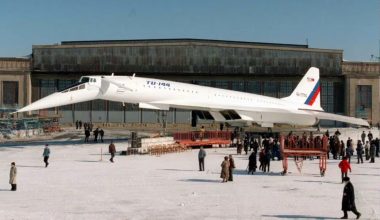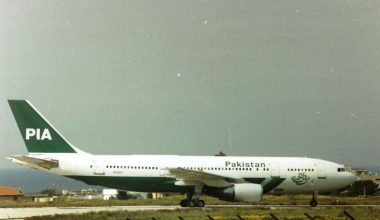
Aircraft Navigation; Then and Now
Today, with thousands of aircraft aloft at a time, communication and navigation systems are essential to safe, successful flight. Nowadays, communication and navigation go on hand on hand since most of the navigation is based on communication between an aircraft and Air Traffic Control (ATC).
Early aircrafts did not have navigation equipment in them since they flew close to the ground and the pilot had almost bird’s eye view. This lack of navigating equipment also contributed to the crashes and deaths at those time. With development in aviation technology aircrafts got bigger and started to carry passengers. So, aiding systems for pilots were developed for easy and safe navigation of aircrafts. The early form of navigation was dead reckoning (taking reference of previously known position), position fixing (using a fixed spot as reference) and use of beacon lights that could be seen from miles away. Early pilots looked out of their open cockpits for roads, and rail lines to find their way in daytime flight. Pilots watched the horizon to make sure they were flying with the aircraft’s nose and wings in the proper orientation relative to the ground, called attitude. Instruments later developed to altimeters, airspeed indicators, rate of climb indicators, compasses, and the introduction of artificial horizon, which operated on gyroscopic principles (early use of gyroscope) and showed pilots the attitude of the aircraft relative to the ground – important for flying in reduced visibility. The artificial horizon invented in 1929 by Lawrence Sperry was later developed in to Inertial Navigation System (INS) and the Inertial Guidance System (IGS) in 2001.
Later, radio communication was introduced which got popularity in World War I. The airlines followed suit after the war, using radio to transmit weather information from the ground to their pilots, so they could avoid storms. Until then the communication was one way, pilots receiving signals and information from the base. In 1926, successful two-way radio communication began and in the 1930s, the first all radio-controlled blind-landing was accomplished. The radio beacons replaced the visual type beacons and thus the first air traffic control tower was established in 1935. Autopilot was first introduced by Douglas Aircraft Company in its aircraft DC-1. A landing system was developed in the USA in 1943/44 for military purposes which was soon to be used for civilian purposes. This system was called the ILS (Instrumental Landing System). However, it was also developed separately in Germany and used by German Air Force in year 1934. In year 1941, an automated version of ILS was developed.
The next phase of development in navigation technology was RADAR. Initially it was developed in 1940 by British scientists as a device that could give early warning of approaching German aircraft. Americans later developed transponders that could identify aircrafts via RADAR. After the World War II, higher frequency transmitters, called the VOR (Very high frequency Omni-directional Radio range) was developed, allowing pilots to fly inbound or outbound along a certain quadrant on a line called a radial.
Federal Aviation Agency was found in 1958 in US, following collision of two aircraft in 1956, which was later named Federal Aviation Administration (FAA). One of its duty was to run a broad air traffic control system. After the crash, huge funding was allocated for rapid development in RADAR technology for precise navigation. In 1960s, solid state radio was developed. At the same time satellites were launched for the purpose of using it in Cold War and in 1970s satellite based navigation was introduced. Early GPS were launched in 1980s and GPS became operational in 1990. Accelerometers were later incorporated first in military aircrafts to measure the aircraft’s acceleration.
RADAR is the primary equipment used by ATC today. It works with various others instruments like DME (Distance Measuring Equipment). Aircrafts have transponder to communicate with the RADAR signals. The transponder also identifies itself with a unique code so that ATC knows all the aircrafts with in its airspace. AHRS and INS are common navigating equipment. Most of aircraft of made today are equipped with these.
The Inertial Measurement Unit (IMU) is an integrated sensor package that combines multiple accelerometers and gyros to produce a three dimensional measurement of both specific force and angular rate, with respect to an inertial reference frame, as for example the Earth-Centered Inertial (ECI) reference frame. IMU is a combination of only a 3-axis accelerometer combined with a 3-axis gyro. The IMU by itself does not provide any kind of navigation solution (position, velocity, attitude). It only actuates as a sensor. INS (Inertial Navigation System) is the system, which integrates the measurements of its internal IMU to provide a navigation solution.
Attitude Heading and Reference Systems (AHRS) is a 3-axis IMU combined with a 3-axis magnetic sensor, and an onboard processor that creates a virtual 3-axis sensor capable of measuring yaw (heading), pitch, and roll angles of an object moving in 3D space. AHRS sensors were originally designed to replace the large traditional mechanical gyroscopic aircraft flight instruments and provide better reliability and accuracy. Typically, an AHRS will consists of either a fiber optic (FOG) or 3-axis angular rate MEMS gyroscope triad, a 3-axis MEMS accelerometer, and a 3-axis magnetometer. Some AHRS sensors also use GPS to help stabilize the gyroscope drift and provide a more accurate estimate of the inertial acceleration vector.
For the past few decades, avionics development has increased at a faster pace. Improvements to solid-state electronics in the form of micro- and Nano-technologies continue to this day. Up until the advent of MEMS (Micro Electro-Mechanical System) technology, inertial sensors consisted of precision mechanical and laser type gyroscopes and accelerometers. Due to their high costs, inertial sensing technology was reserved for high-end aerospace applications. It was the advancement in Inertial Navigation that made possible many of the great spaceflight achievements such as the Apollo program. Aside from space programs, navigation systems like INS can also be found on modern day cruise missiles.
Article By: Anil Sapkota
Mechanical Engineering Student (Final Year)
Institute of Engineering
Pulchowk Campus







